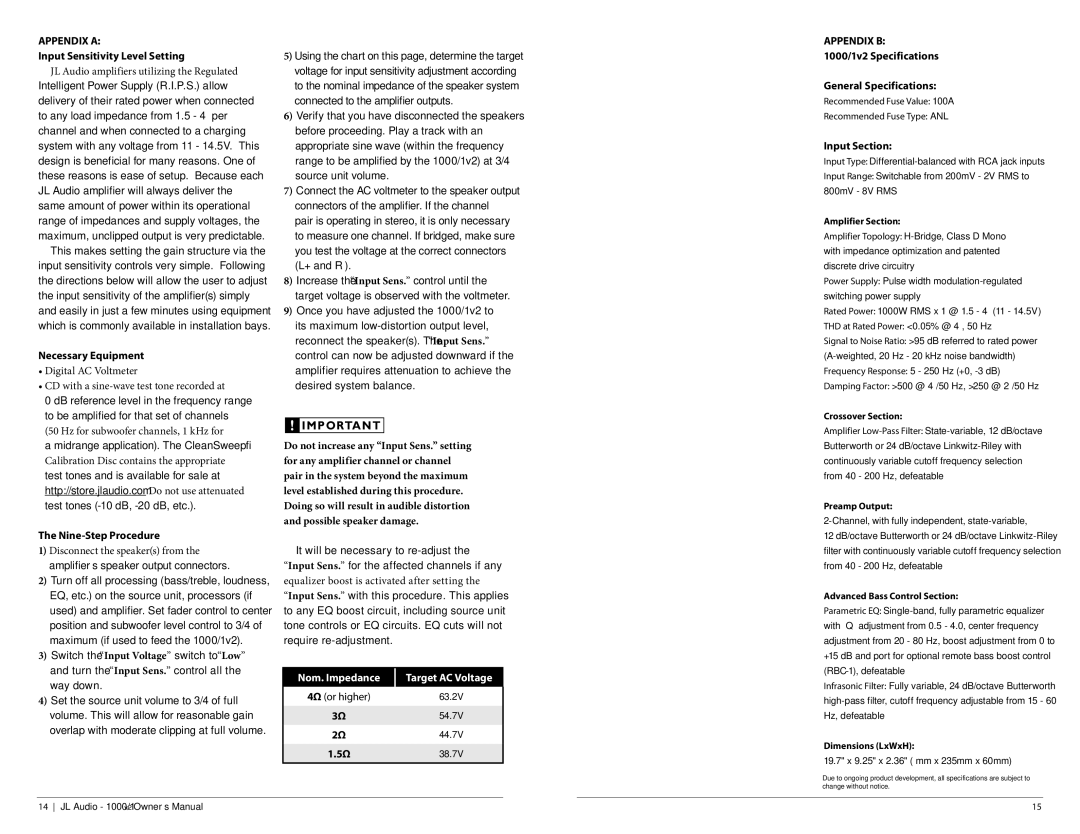1000/1v2 specifications
The JL Audio 1000/1v2 is a standout monoblock amplifier designed to deliver exceptional power and sound quality for subwoofer applications. Renowned for its innovative technology and reliability, this amplifier is the choice of many audiophiles and car audio enthusiasts looking for premium performance.One of the most notable features of the 1000/1v2 is its high power output. With a maximum continuous output of 1,000 watts at 2 ohms, this amplifier is capable of driving even the most demanding subwoofers with ease. The amplifier is engineered to provide clean and efficient power, minimizing distortion and maximizing the audio experience.
The 1000/1v2 incorporates JL Audio's proprietary Class D technology, which enables it to achieve high power levels without the excessive heat generation typically associated with traditional amplifiers. This not only improves the amplifier's efficiency but also enhances its durability, allowing it to perform optimally under various conditions.
Another key aspect of the 1000/1v2 is its advanced signal processing capabilities. It features a built-in low-pass filter with adjustable cutoff points, allowing users to customize the frequency response to suit their specific audio systems. Additionally, the amplifier includes a patented differential-balanced input section that ensures a clean, noise-free signal, which is crucial for achieving high-quality sound reproduction.
The JL Audio 1000/1v2 also offers comprehensive control options. Its user-friendly interface features a gain control, a bass boost knob, and phase adjustment, all of which empower users to tweak the sound output to their liking. Moreover, it is equipped with a remote level control feature, enabling adjustments from the driver's seat for added convenience.
Notably, this amplifier features a robust and stylish design, equipped with a durable aluminum chassis that not only looks appealing but also aids in heat dissipation. The various protection circuits built into the 1000/1v2 safeguard the amplifier and connected components against issues such as overheating, short circuits, and overloading, ensuring longevity and reliability.
In conclusion, the JL Audio 1000/1v2 is an exceptional choice for those seeking a powerful and versatile monoblock amplifier. With its impressive output, innovative technology, and user-friendly features, it stands out as a top contender in the competitive world of car audio amplification. Whether for casual listening or high-performance sound setups, the 1000/1v2 delivers an audio experience that is both exhilarating and immersive.

